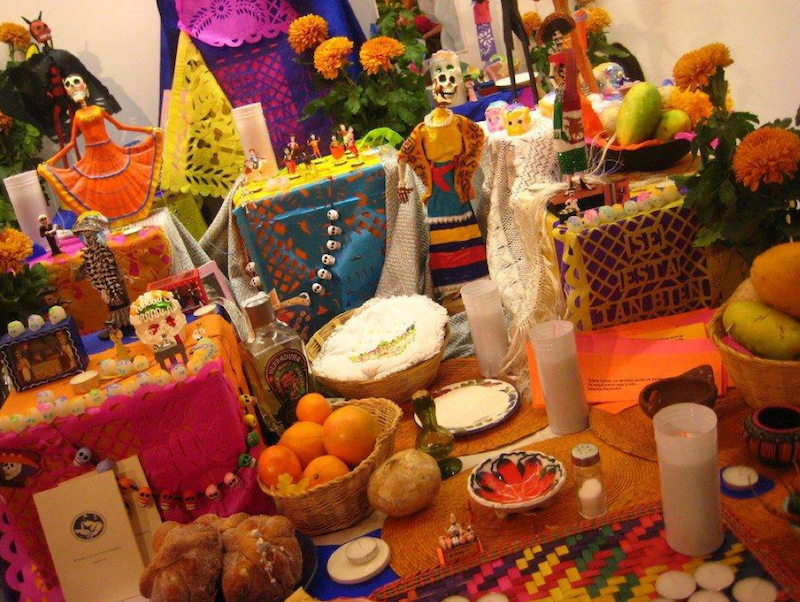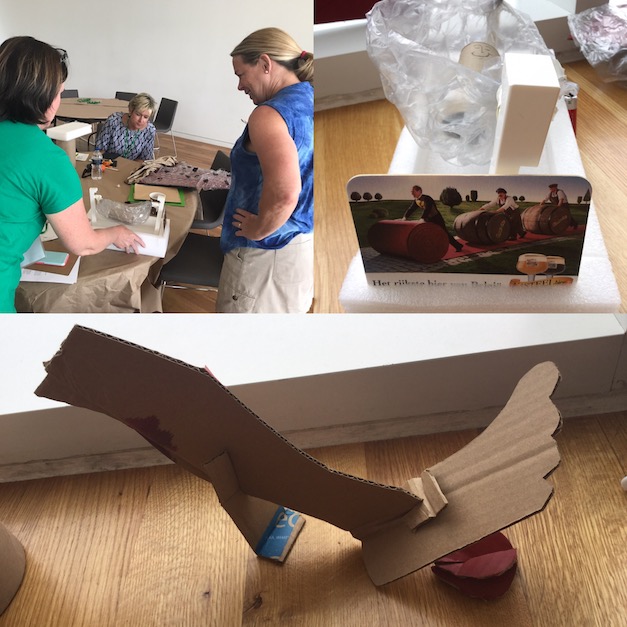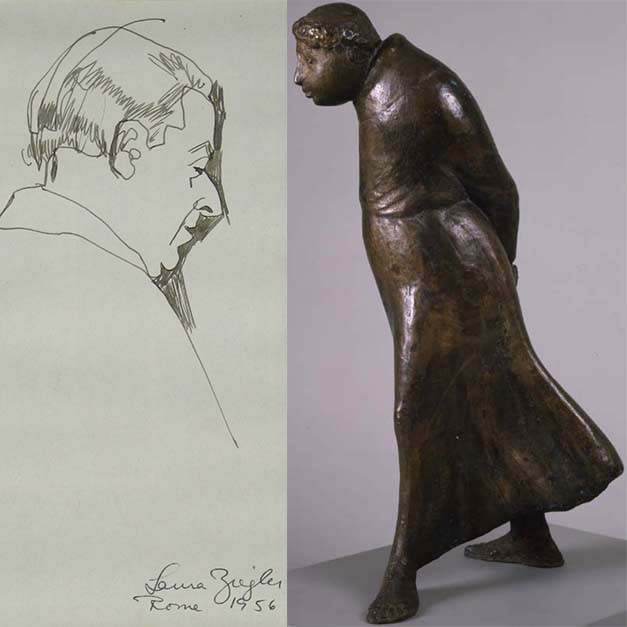
Andre Williams has been coming to the museum since 2014. He started coming because he heard there was a free music studio available at Teen Open Studio. In 2016 when he turned 20 he was brought on as official staff and became a Mentor. Pretty quickly Andre also joined the Visitor Engagement team, and is also helping visitors in the galleries. He went from donating plasma for money to pay for studio time to helping teens and visitors engage creatively. Below are excerpts from an interview from Spring 2017 between Andre Williams and Michael Voll, the Teen Programs Coordinator at Columbus Museum of Art.
MV: Andre I wanted to talk to you and ask you a couple of questions just so people can know a little bit more about your story. So can you tell me about the first time that you came to Teen Open Studio?
AW: I emailed (you) Mr. Mike and got in contact and got more information about the museum, but specifically the studio.
MV: The music studio?
AW: Yeah the music studio. That was the first thing I was interested in. I had seen ‘free studio’. I was donating plasma for recording studios. We were able to come in, create some stuff, learn some stuff and it expanded from there. Then I figured out that I didn’t want to actually make music. At first I was rapping, but now I make more so records. I might share the ideas. Give the record to somebody and do more behind the scenes with management and marketing. I just started a company not too long ago. I just got my LLC papers back from the Secretary of State. So I have that now.
MV: Congrats!
AW: YEAH. So pretty much I figured out I wanted to do that. I was very artistic and needed ways to express my art but I didn’t know if fully being an artist was my thing. I think more it is me bringing the art out of others and helping people to their potential. I think that’s my thing.
MV: Why did you keep coming back?
AW: The environment. Because after a while, yeah it was the free studio, but after a while people. I brought people to the studio because we were chasing the dream together. But one by one people start falling off. But I still kept coming because I built a foundation and bondage with a lot of people. Like you, Mr. Alvin, and it was good, it was an outlet. I was going through a lot of stuff at the time. Up and down with school, money situations with different stuff. And it was (being) able to talk to you all, coming in to talk with you all on Thursdays and Fridays, and I was able to create something even if I was painting shoes and I was failing.
Most of my first creations I was failing. Most of my time the shoes that I painted sucked in the beginning. They were horrible. My clothes that I was making on the sewing machine sucked. My tailorations on clothes sucked in the beginning, but I still was coming because it was a bond and it was really cool and there were a lot of people here that I was able to vibe with and do different things. I just appreciated it because I needed it. I needed to get away and express my art. And yeah it was real stressful but that kept me going. Coming back was the people. The people here, really, that was really it.
MV: is there anything else that you did as a teen?
AW: Yeah, the music, fashion, mentorship. That’s the number one thing. Like literally people like Beibs, well I call her Beibs but Teen Mentor Morgan, or just some of the other teens I would just sit ant I would admire their art. I didn’t know that I was helping them on their journey, but I was just being sincere. I was being sincere and like I really love your pieces. (Saying) I really love this or the way you did this. I was being sincere and I was seeing that it was motivation and it was helping them. That was the other main thing that I got into and I found my passion. My first year at SURGE and my senior year of high school it showed me that I am supposed to be in something with mentorship.
And mentorship goes a long way, like management, when you’re a manager you are really a mentor. Or when you are leading people you are a mentor. Those are the best leaders not people that are just bosses of people but when you are mentoring people, helping people, when people can see that you are by their side, that you are there to help.
MV: So you were telling me a story earlier when you were about to turn 20.
AW: I was stressing before I turned 20, like what am I going to do? I was like dang. And I had no clue there was a job opportunity available. Before I turned 20 you and Mr. Alvin offered me a job. I was really appreciative because I did not want to leave and I didn’t know what I was going to do next. I didn’t have anything to do next. I was working, at that time, I was working three jobs. I was working a third-shift job. I was working at Foot Locker, and I had taken two classes at Columbus State, but I started failing one of my classes so it was bad. That time was a learning experience. Having three jobs, I was in school and I was still coming here. And here was giving me the outlet with everything with stress. Thinking that myself I was not going nowhere because I was doing too much. I didn’t have any goals or aspirations or anything, but coming here it kept me and it shined the light on what I was supposed to do.
MV: When Mackenzie left, the previous mentor, because of college conflicts I remember asking her, “Hey do you have any friends who you would recommend to be a mentor?” She said, “100 percent hire Andre. He already does everything a mentor needs. He has the mindset, he has the knowledge, he has the skills.”
AW: I appreciate it.
MV: So my last question is: Where do you see yourself in the future?
AW: I definitely see myself still mentoring. Definitely when I get to a place I am giving back to SURGE. And I definitely see myself running an entertainment company like I am starting to do. Helping artists and different people. Building a brand, Slim Hype, with my brand I am doing self-help and education, but also music and entertainment. The main thing is helping. I want to help everybody reach their potential, reach their goals and reach their destiny. That is my end goal, to build that. It’s about collaboration. That is the number one thing that I have learned here, it is about collaborating.
MV: I think you will do it. So do you have anything else to say?
AW: Man um it’s weird. I am getting emotional. I appreciate you Mr. Mike I really do, like sincerely from the bottom of my heart every, every, everything that you have done. And you will prolly look and understand, but know that you impacted a lot of us. And I know you impacted me.
MV: Thank you. You inspire me, and you inspire a lot of people. I hope you see that in yourself too.
The Columbus Museum of Art has provided more than 200 hours of programming annually for Columbus teens like Andre Williams, who now serves as a program mentor in Teen Open Studio.
Help shape unique experiences like Teen Open Studio, and nurture an environment that fosters teens’ creative thinking skills, exploration, and learning.
DONATE NOW






